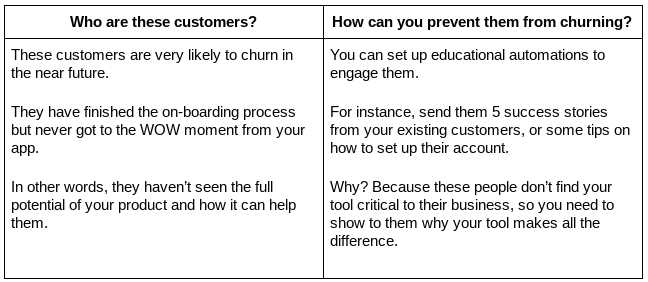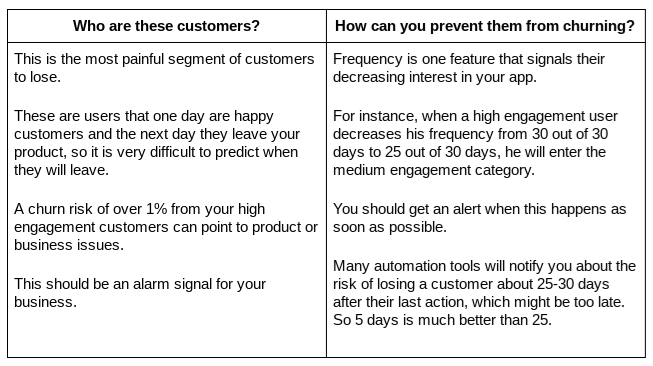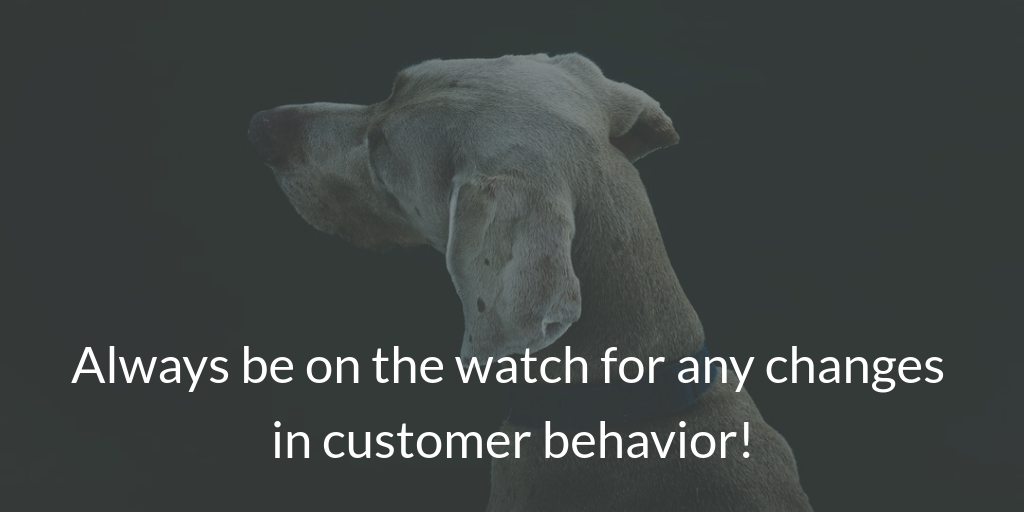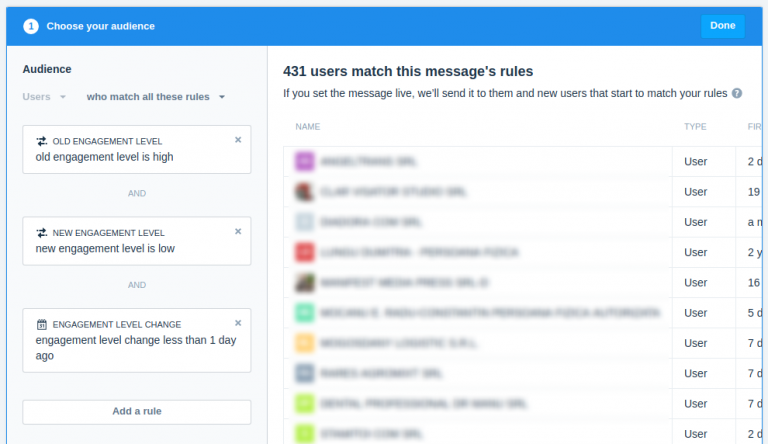In the previous article I was talking about mastering engagement scoring and churn prediction. The whole point of being able to predict churn is to prevent it.
Prevention is much easier to achieve and much more cost-efficient than trying to bring back a customer who has already churned.
Basically, so far you are able to:
- Segment users based on their engagement patterns.
- Calculate the churn risk for each category.
- Identify the users who are most likely to churn in the near future.
Now that you have determined the categories of users who are about to churn, you have to take action.
So what can you do about your most vulnerable categories of users?
In our experience, there are 3 main categories of users who are very likely to churn. And here’s a quick recipe on how to keep each category interested in your product.
A. The customers who never reach Medium or High Engagement Levels on their own

B. The customers who once had Medium or High Engagement levels, and have now dropped to Low or No Engagement levels

C. The Medium or High Engagement customers who churn abruptly

Practical tips on how to decrease churn
1. Monitor your customers’ engagement levels on a daily basis.
If you find out that a user hasn’t used your product in a month, it often is way too late to do anything about it. So, the faster you notice customers changing behavior for the worse, the more chances you have of getting them back.

So, what is there to do?
- First, identify the minimum set of engagement actions that customers need to perform in order to increase their engagement level, and their frequency.
- Then, analyze customers’ behavior with the minimum score from each engagement category.
- What you need to do is get as many people as possible above that low threshold.
For instance, if users need to do 1 engagement action per day or per week, you will know how to set up your automation campaigns to decrease their churn risk.
Let me give you an example: one company we worked with discovered that it was enough for their customers to check their in-app inbox at least once every 2 weeks and when that happened their churn risk decreased considerably.
2. Take action when a customer changes engagement level for the worse.
To notice users’ changes in engagement levels it is essential to closely track their in-app activity.
Sync every update of a change in the customer’s engagement level with your automation service or CRM tool.
Target the people who decrease their engagement levels as soon as this happens. You can automate this process by creating rules and sending them personalized messages when necessary, like in the following example:

3. Benefit from customers increasing engagement
Using your happy customers’ accounts about your product is a clever way not only to attract new customers, but also to help low engagement users discover the full potential and uniqueness of your app.
But remember, even when users are highly engaged and happy with a product, they rarely take initiative and leave a review… unless asked to do so!
We all know that people are much more prone to giving negative reviews than positive ones on their own initiative.
So don’t be shy, ask for reviews and use them to your advantage!
For more details on how to make the best of the reviews you are getting, check out the first #DataDiary article entitled How to get sincere outstanding reviews on autopilot. And if you would like to read more on other related topics, you can subscribe to my newsletter here.
If you want to find out more about preventing churn – please check out the second part of my webinar on Engagement Scoring & Churn Prediction, which was kindly hosted by 2checkout.
Looking to get deep insights into how your customers use your product? InnerTrends can help. You won’t have to be a data scientist to discover the best growth opportunities for your business, our software will take care of that for you.
Schedule a Demo with us and witness with your own eyes just how powerful InnerTrends can be.